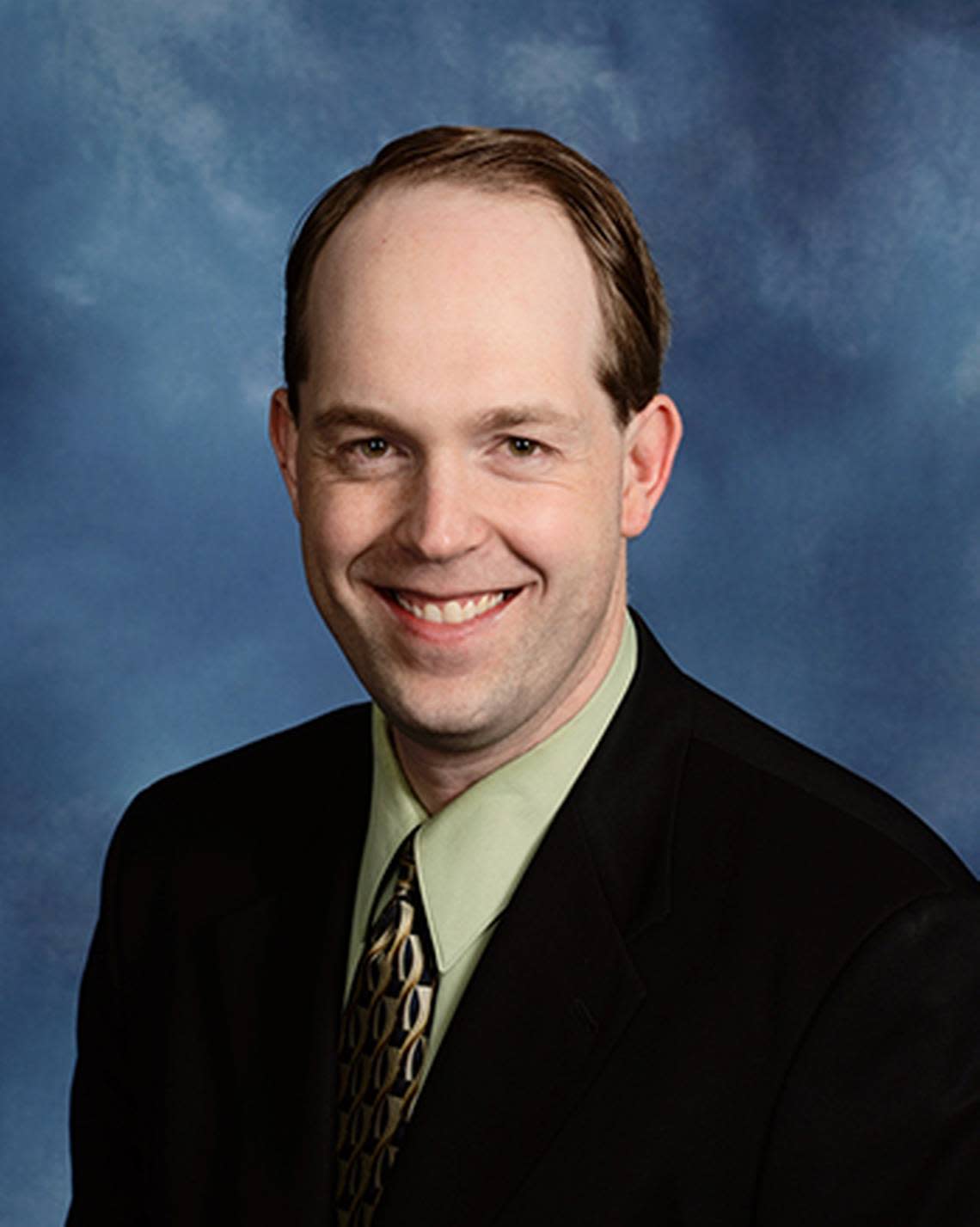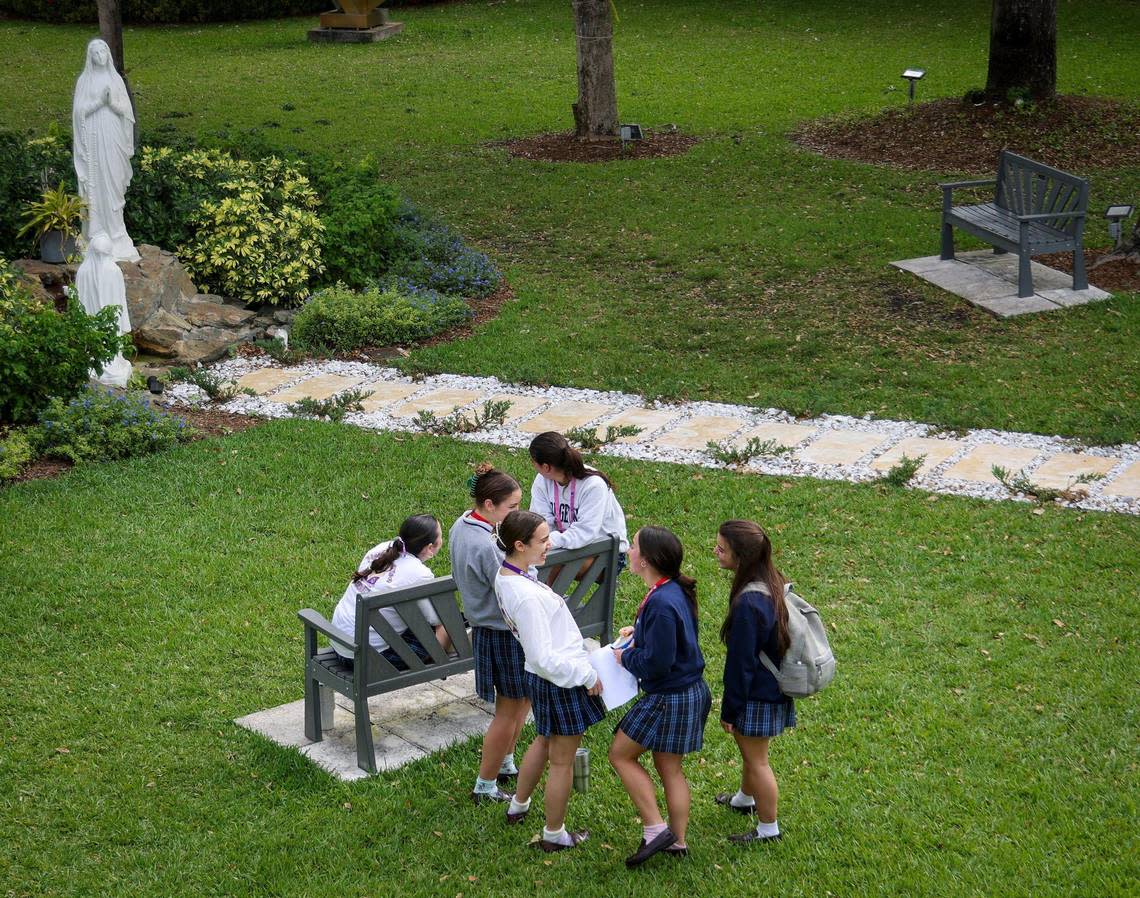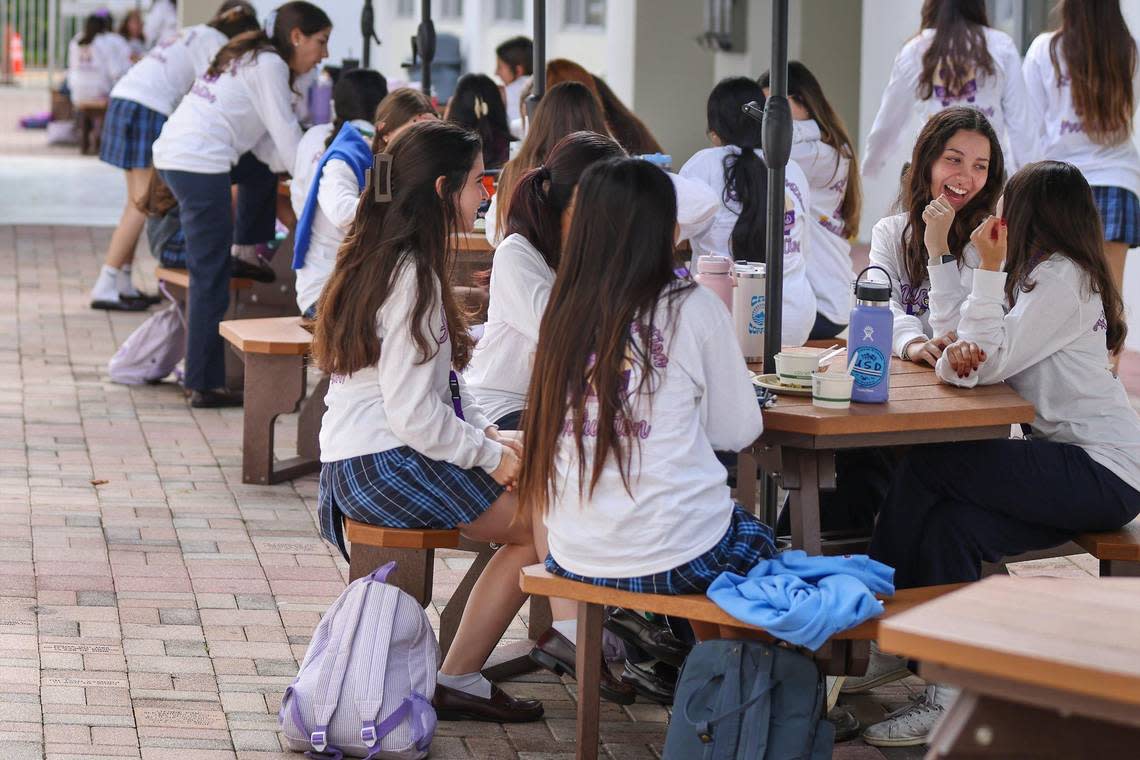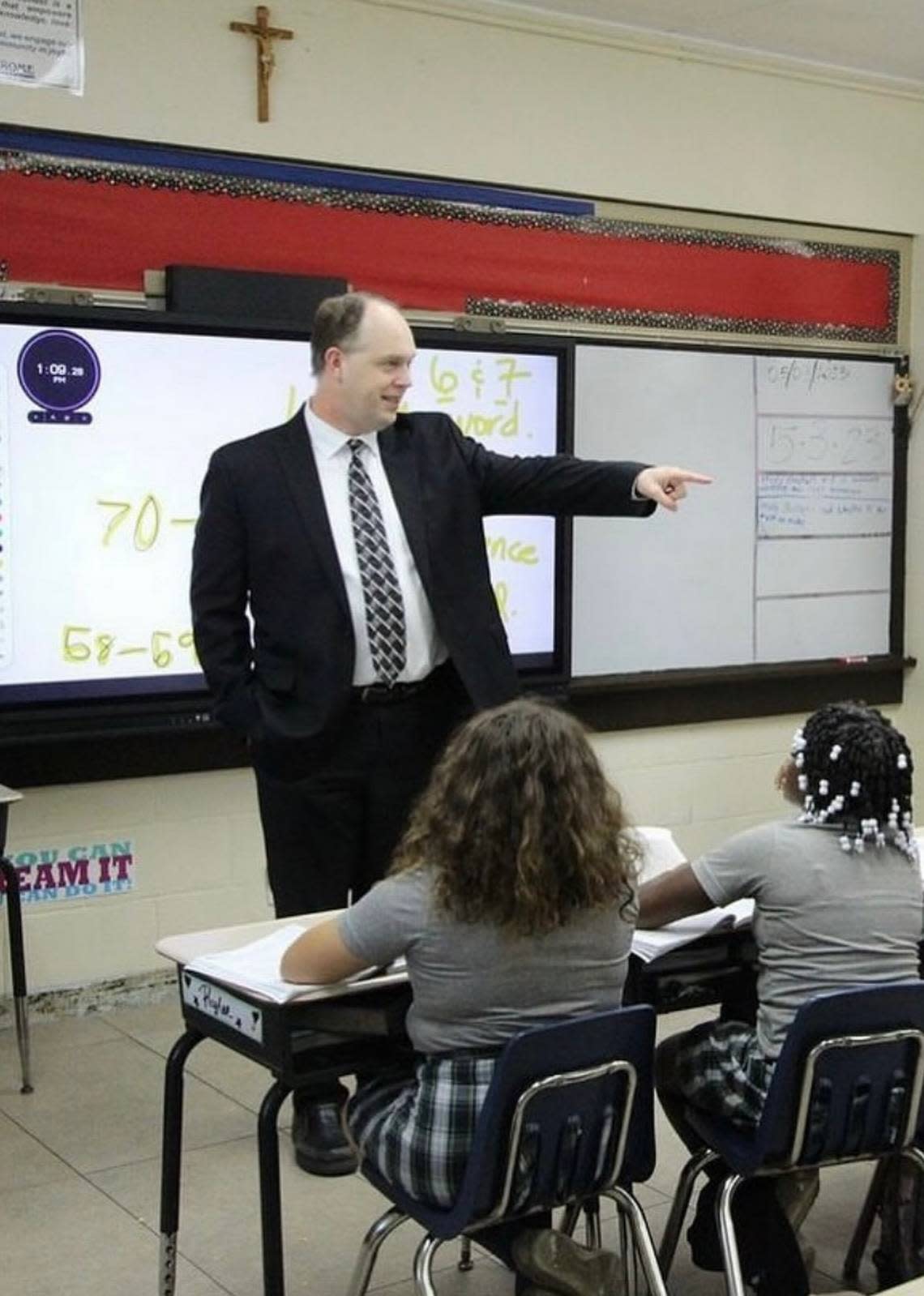The voucher effect? South Florida Catholic schools see more kids, even waiting lists
Helped by an influx of new Floridians, and boosted by the state’s newly expanded voucher system, Catholic schools in South Florida are seeing steady growth and even adding new classrooms. That’s in stark contrast to what’s going on in the public schools, particularly in Broward County, which faces tough decisions on closing entire schools after decades of continuous decline in enrollment.
How big is the difference? Catholic schools in Miami-Dade, Broward and Monroe counties this year reached the highest number of students in more than a decade. Over the same period, public schools in Miami-Dade and Broward have lost tens of thousands of students.
“The continued growth of our Catholic schools in South Florida is enormously heartening,” said Jim Rigg, superintendent of schools at the Archdiocese of Miami. ”We are thrilled to welcome so many new families.”
Rigg, who has been in his role for three years, largely credits the rise in enrollment to demographic changes in Florida and strong “values-based” education. “I believe our Catholic schools have a positive reputation and are seen as schools of choice,” he said.
Catholic student enrollment rose from 28,880 students in the 2022-23 school year to 29,975 students in the current school year, representing a 4.1% increase in schools owned and operated by the archdiocese. Overall, including five independently owned schools, there are 35,028 students enrolled in 64 Catholic schools in the tricounty area.
While it remains a small fraction of the half-million-plus students in public schools, it’s a significant turn-around for a Catholic school system that was shuttering some schools of its own not all that long ago. The growth spurt started about four years ago, according to data from the archdiocese, and has increased by more than 1,000 students each year since.

Though not a primary reason for the rise, Rigg acknowledged said that Florida’s private school voucher system had “a positive impact on enrollment.”
The state’s voucher system has long been controversial. Supporters say it provides parents “school choice” and options outside a public system they may consider inadequate and critics argue it was created by conservative lawmakers to divert taxpayer dollars into private and religious schools. Last year, lawmakers and Gov. Ron DeSantis expanded the program by removing income caps to qualify for lucrative state scholarships for K-12 students, opening vouchers to families previously deemed too wealthy to qualify.
The effect of that expansion has proven dramatic, with state scholarships for South Florida Catholic schools skyrocketing nearly 60 percent last year from around 12,000 to more than 19,000. With the average amount about $7,600, that means the archdiocese’s schools could have received up to $144 million from vouchers this year.
But, so far at least, Catholic and public school administrators agree, the program doesn’t seem to be what is driving the drop in public school attendance. That’s because the latest surge in voucher use largely comes families who were already sending kids to Catholic schools but paying the bill themselves. Now, taxpayers are helping pay that tuition.
Ron Steiger, the chief financial officer for Miami Dade County Public Schools, said most of the increase in vouchers in private and Catholic schools falls in that category.
“The vast majority of those students were already private school students, their tuition is now fully or partially covered by tax dollars,” he said.
Boon for some parents
Parents Scarleth Arroliga and Nelson Santana were among those who took advantage of the voucher money for the first time this year. They say it’s been a game changer.
“We are extremely happy,” said Arroliga. “Now all our three kids are in private school.”
Unsatisfied with their six-year-old son’s charter school, Arroliga and Santana began looking for other options, particularly for schools with a more intimate learning environment.
“It was too big and just didn’t have that community feel,” said Arroliga about her son Alexander’s former school.
The couple had dreamed of sending Alexander to Good Shepherd Catholic School in West Kendall, but said the tuition cost was too high to justify for their family of five.
“When the voucher was opened, then it became a reality,” said Santana, Alexander’s father. “Before the voucher, it was just a dream.”
The parents received $8,000 through the state program, Step Up, which they were able to use for the majority of their son’s tuition. They’re thrilled with the result.
“He’s doing amazing. He loves his class, his teammates ... They’re growing up with people teaching them good things,” Santana said. “And academically, they’re also excelling.”
READ MORE: What to know about Florida’s new private school voucher program that has no income limits

Wait lists at Catholic high schools
The shifting enrollment has produced opposite problems on South Florida’s education landscape — waiting lists at some Catholic schools and empty classrooms at some public ones, particularly in Broward County, where the district plans to close at least five schools in 2025.
With seven of nine high schools operated by the archdiocese already full, the archdiocese is actually considering opening more schools or reopening previously closed ones. St. Malachy Catholic School in Tamarac, for example, reopened its doors last fall after a 14-year hiatus, when two charter schools used the facilities until 2021.
“Already St. Malachy is receiving a lot of inquiries about enrollment for next year, which shows that there continues to be demand in that part of the archdiocese,” said Rigg.
The enrollment growth could even be larger. Our Lady of Lourdes Academy, an all-girls Catholic high school established over 60 years ago, has also experienced an increase in demand this past year. But, because of an ordinance put in place over a decade ago aimed at reducing traffic in the neighborhood, the prestigious school cannot exceed a certain number of students.
“We’ve been very blessed that we always have people that want their daughters to come to our school, but this year admissions decisions were extra challenging because there were so many applicants,” said President of Lourdes Academy Sister Carmen Teresa Fernández.
The county-imposed cap has allowed the enrollment numbers at Lourdes to remain unchanged despite the larger trend in the archdiocese. Fernández and Olga Martinez, Lourdes’ dean of enrollment and engagement, said the competitive academic programs, college preparation and “close knit community of faith” are just a few reasons why parents keep on applying.
“The academics are important, but we don’t just stop there,” said Martinez.

Catholic school reopening
Among the school reopenings last year were Cristo Rey Miami High School in North Miami and the Basilica School of Saint Mary Star of the Sea in Key West. Though nothing has been decided yet in terms of new school openings, Rigg said the archdiocese is in the process of seeking out the best locations.
“We’re still in the planning and feasibility stage, but we are looking at a potential Catholic school in the Homestead area,” he said. “There may be more schools in Broward County.”
That expansion would come as the Broward school district prepares to contract because of shrinking enrollment. Broward has lost about 58,000 students in the last 20 years, falling to 201,273 in 2024 — a trend that’s expected to continue.
Daniel Foganholi, a Broward School Board member, said he supports the state’s school choice efforts but hopes new leadership at the district can reshape public school to make them more competitive and attractive options for parents, who may think charter and private schools are doing a better job of educating children and keeping them safe.
“My focus is not really the vouchers, but the fact that families are not choosing the public school system,” Foganholi said. “I believe once we gain the trust back of many families in Broward County, by making the right decisions of how to spend our money ... I believe the numbers will start rising again.”
Debra Hixon, an at-large board member in Broward, also doesn’t see vouchers powering a flight from public to private schools - saying the annual growth of 1,000 students a year at Catholic schools doesn’t amount to a big shift in two school districts that combined served some 530,000 students.
But Sarah Leonardi, another Broward School Board member, believes vouchers have enriched private schools at the expense of the public system.
“There is a place for parochial schools, and I respect any parent’s decision to make that choice for their child,” she said. “I do not believe taxpayer dollars should fund private or religious schools and it’s unfortunate that the Legislature is using taxpayer dollars to fund private religious institutions instead of our public schools that are open and able to serve to all students regardless of religion, disability status, or sexual orientation among other things.”
Miami-Dade public schools also have served a shrinking number of students, with enrollment dropping by more than 51,000 students in the last two decades, according to district records. Last year, enrollment sat at 319,612 students.
The decline in both counties has come amid a sharp expansion of charter school and private school options that predated the state’s voucher system.
Miami-Dade School Board Chair Mari Tere Rojas also didn’t see the latest changes in scholarship income limits a major problem for the public school system, saying the district has “not seen this expansion have a substantial impact on current enrollment in Miami-Dade County public schools because most of these new voucher students were already attending private school.”

Rigg, superintendent of South Florida’s Catholic schools, echoed that view, saying there are larger factors than vouchers behind the revitalization of the Catholic school system.
“We’re seeing many families move to Florida from the north of the United States for a variety of reasons, as well as just continuous wave after wave of immigrants from Latin America and the Caribbean,” he said. “Many of those immigrants affiliate as being Catholic.”
This story was produced with financial support from Trish and Dan Bell and from donors comprising the South Florida Jewish and Muslim Communities, in partnership with Journalism Funding Partners. The Miami Herald maintains full editorial control of this work.
